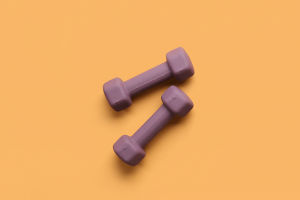In the fitness world, dumbbell training is popular for its flexibility and versatility.
Dumbbells are simple machines, but they offer almost limitless ways to exercise, satisfying people of all fitness levels and goals.
Whether it's building muscle, shaping your body, or improving strength and endurance, dumbbell training can play an important role.
A significant advantage of dumbbell training is its adjustability. Compared with fixed machines, dumbbells allow athletes to have better control over their posture and rhythm when performing movements. This sense of control helps to improve the effectiveness of the exercise while reducing the risk of injury.
For beginners, dumbbells can help them gradually adapt to strength training and establish correct movement patterns. For experienced fitness enthusiasts, dumbbells can be an effective tool to increase load and vary the content of training.
There are many types of dumbbell training, ranging from basic presses and curls to complex compound movements. The basic dumbbell press is an excellent full-body exercise that can effectively exercise the shoulders, chest, and triceps.
The dumbbell curl focuses on the biceps and can help shape strong arms. By combining these basic movements with other compound movements, athletes can achieve full-body coordination training, such as dumbbell squats, which exercise the leg and core muscles at the same time.
In addition to basic strength training, dumbbells can also be used to enhance body stability and flexibility. By performing unilateral training or asymmetrical movements, such as single-arm rowing or single-leg dumbbell deadlifts, athletes can exercise core muscles and improve body balance and coordination. These exercises can not only improve athletic performance but also improve body functionality in daily life.
In dumbbell training, appropriate weight selection is crucial. Too heavy dumbbells may lead to irregular movements and increase the risk of injury, while too light dumbbells may not achieve the ideal training effect.
For the best results, athletes should gradually increase their weight according to their physical fitness level and pay attention to the standardization and stability of the movements.
In addition, reasonable training frequency and rest time are also crucial to improving training results. Generally speaking, the frequency of strength training is 2-3 times a week, and each muscle group rests for at least 48 hours to facilitate muscle recovery and growth.
As the training progresses, athletes can gradually introduce different training techniques to increase the challenge of exercise, such as overload training, speed training, or high-intensity interval training.
These techniques can not only improve the training effect but also effectively prevent the monotony and boredom of training, thereby maintaining the enthusiasm and motivation for exercise.
In addition, diet and recovery are equally important in dumbbell training. Reasonable nutritional intake can provide the required energy and nutritional support for training, while proper rest and recovery can promote muscle growth and repair.
Many athletes will gradually realize the close relationship between nutrition and training effect after starting dumbbell training. Therefore, combining scientific diet plans with training arrangements can help athletes achieve their fitness goals faster.
Dumbbell training is a flexible and effective fitness method suitable for athletes at all levels. By reasonably arranging training content, weights, and diet, combined with sufficient recovery time, athletes can give full play to the advantages of dumbbell training and achieve better physical fitness and health levels. No matter what your goal is, dumbbell training can add unlimited possibilities to your fitness journey.


